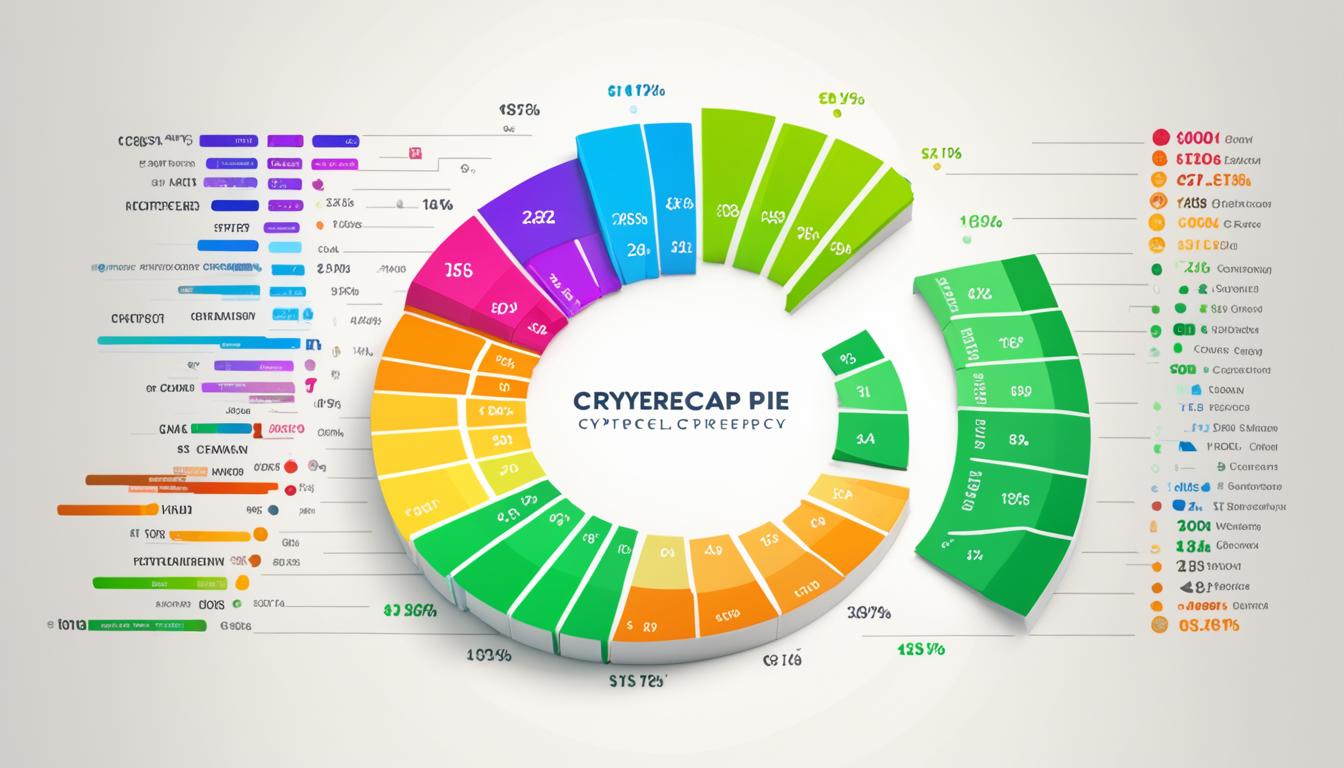Did you know that the total market capitalization of the cryptocurrency market exceeded $2 trillion in April 2021? That’s more than the GDP of many countries around the world! Market capitalization, or market cap, is a crucial metric used to assess the value and popularity of cryptocurrencies in the market. It provides insights into a coin’s dominance and relevance in the crypto market over the long term.
When it comes to understanding market cap in cryptocurrency, there are several factors to consider. One of the key elements is the circulating supply of a cryptocurrency, which represents the coins that are actually available for trading. Coinmarketcap, a popular website, provides comprehensive data on the market cap of various cryptocurrencies, as well as other financial metrics.
In this article, we will delve deeper into how market cap is calculated, its importance in evaluating cryptocurrencies, and the factors that affect market cap. By understanding market cap, investors and traders can make informed decisions and develop effective investment strategies in the dynamic world of cryptocurrencies.
Key Takeaways:
- Market capitalization is a crucial metric used to assess the value and popularity of cryptocurrencies in the market.
- It is calculated by multiplying the current price of a cryptocurrency by its circulating supply.
- Monitoring the circulating supply of a cryptocurrency is important, as it represents the coins that are actually available for trading.
- Market cap provides insights into a coin’s dominance and relevance in the crypto market over the long term.
- Coinmarketcap is a popular website that provides comprehensive data on the market cap of various cryptocurrencies, as well as other financial metrics.
How Market Cap is Calculated and Its Importance
Market capitalization, commonly known as market cap, is a fundamental metric used to assess the size and potential of cryptocurrencies in the market. It is calculated by multiplying the current price of a cryptocurrency by its circulating supply. Let’s delve deeper into how market cap is calculated and why it is important for investors and traders.
Calculating market cap involves multiplying the current price of a cryptocurrency by its circulating supply, which refers to the number of coins available for trading in the market. The formula is as follows:
Market Cap = Price per Coin × Circulating Supply
Market cap provides valuable insights into the relative size and growth potential of different cryptocurrencies. Cryptocurrencies with higher market capitalization are generally considered to have a larger presence in the market and may be more established. They often attract more attention from investors and traders due to their perceived stability and reliability.
Market cap also serves as a liquidity indicator, reflecting the ease with which a cryptocurrency can be bought or sold. Generally, coins with higher market cap tend to offer better liquidity, making them more attractive to traders who seek to enter or exit positions quickly without impacting the market price significantly.
Risk assessment is another crucial aspect of market cap. While smaller market cap cryptocurrencies may offer higher growth potential, they may also carry higher levels of risk due to their relatively smaller size and lower market liquidity. Large-cap cryptocurrencies, on the other hand, are often viewed as more stable and less volatile.
Example:
Let’s consider two popular cryptocurrencies:
- Bitcoin (BTC) with a current price of $50,000 and a circulating supply of 18.5 million coins.
- Ethereum (ETH) with a current price of $3,000 and a circulating supply of 117 million coins.
To calculate their market caps:
Bitcoin Market Cap = $50,000 × 18.5 million = $925 billion
Ethereum Market Cap = $3,000 × 117 million = $351 billion
Based on the example above, we can see that Bitcoin has a larger market cap compared to Ethereum, indicating its relative size and dominance in the market.
Investors and traders often use market cap as a factor in their decision-making process. It helps them assess the acceptance and popularity of a cryptocurrency within the crypto community. Additionally, market cap can aid in identifying potential investment opportunities and determining the overall risk associated with a particular cryptocurrency.
| Cryptocurrency | Price per Coin | Circulating Supply | Market Cap |
|---|---|---|---|
| Bitcoin (BTC) | $50,000 | 18.5 million | $925 billion |
| Ethereum (ETH) | $3,000 | 117 million | $351 billion |
Key Takeaways:
- Market cap is calculated by multiplying the current price of a cryptocurrency by its circulating supply.
- It provides insights into the relative size and growth potential of cryptocurrencies.
- Market cap serves as a liquidity indicator and a risk assessment tool.
- Investors and traders use market cap to identify investment opportunities and assess the acceptance of cryptocurrencies within the crypto community.
Factors Affecting Market Cap and Investment Strategies
Several factors play a significant role in determining the market cap of a cryptocurrency. These factors include:
- Circulating Supply: The circulating supply of a cryptocurrency refers to the amount of coins available and actively being traded in the market. Market cap calculations only consider the coins in circulation.
- Price per Token: Fluctuations in price can have a significant impact on the market cap of a cryptocurrency. As the price per token increases, the market cap also increases, and vice versa.
- Trading Volume: Trading volume represents the total amount of a cryptocurrency traded within a specific timeframe. Higher trading volumes generally indicate higher market liquidity and can positively impact market cap.
- Economic Factors: General market conditions, such as economic stability or volatility, can influence the market cap of cryptocurrencies. Economic factors like market trends, investor sentiment, and regulatory developments can impact the demand and value of cryptocurrencies.
Investors often categorize cryptocurrencies into market cap categories based on their market capitalization:
- Large-Cap Cryptocurrencies: Large-cap cryptocurrencies typically have a high market capitalization and are considered more established and stable. Examples include Bitcoin (BTC) and Ethereum (ETH).
- Mid-Cap Cryptocurrencies: Mid-cap cryptocurrencies fall between large-cap and small-cap in terms of market capitalization. These coins offer a balance between potential growth and stability.
- Small-Cap Cryptocurrencies: Small-cap cryptocurrencies have a lower market capitalization and are often seen as riskier investments. However, they may also have higher growth potential.
When developing an investment strategy, investors consider these market cap categories to evaluate potential risks and returns. Large-cap cryptocurrencies offer stability, while small-cap cryptocurrencies can provide opportunities for higher growth. However, it’s essential to conduct thorough research and consider other factors beyond market cap alone before making investment decisions.

Investment Quote:
“Investing in cryptocurrencies requires careful consideration of various factors, including market cap and long-term growth potential. Diversifying your portfolio across different market cap categories can help balance risk and maximize returns.” – Crypto Investor
Conclusion
Understanding market cap is essential for investors and traders in the cryptocurrency market. Market cap provides insights into the value, popularity, and stability of cryptocurrencies. It allows investors to assess the size and dominance of a cryptocurrency in relation to its competitors. By considering market cap, investors can better understand the potential growth and risks associated with a particular cryptocurrency.
However, market cap should not be the sole criteria for making investment decisions. It is important to consider other factors such as technology, adoption rate, and competition. A high market cap does not guarantee a successful investment, as market conditions and other factors can impact the performance of a cryptocurrency.
Market cap is a dynamic metric that can change rapidly, so it is crucial for investors to stay updated and do thorough research before making any investment decisions. By staying informed about the latest market trends and conducting thorough analysis, investors can make well-informed choices and minimize risks in the volatile cryptocurrency market.

Leave a Reply